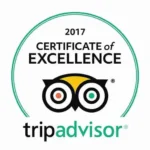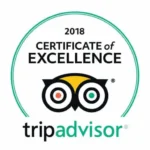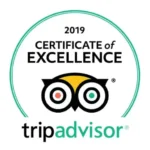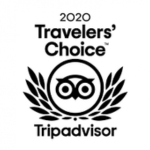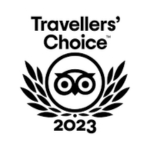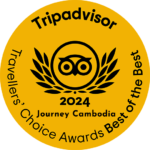The Story Behind Siem Reap’s Floating Villages: A Journey Into Cambodia’s Water World
Life on the Water: How Cambodia’s Lake Communities Adapted and Thrived
The story behind Siem Reap’s floating villages shows people’s amazing ability to live with nature. These villages sit on Tonle Sap Lake, which changes size with the seasons. Families here have built entire lives on water, creating one of Cambodia’s most unique sights.
What Makes Siem Reap’s Floating Villages Special?
Cambodia sits in Southeast Asia, bordered by Thailand, Laos, and Vietnam. At its heart lies Siem Reap, a city most known for the ancient temples of Angkor Wat. But beyond these stone wonders are communities that live on water year-round.
Journey Cambodia offers guided trips to these water-based towns. You’ll see homes, schools, stores, and even religious buildings—all floating! These villages work with the lake’s natural cycle, moving up and down as water levels change.
The Story Behind Siem Reap’s Floating Villages: A Deep History
People have lived on Tonle Sap Lake since the time of the Khmer Empire in the 12th century. The lake once fed a million people during Cambodia’s golden age. Each year, the lake does something strange—it grows much bigger! During dry months, it covers about 2,700 square kilometers. When rainy season hits, it swells to 15,000 square kilometers.
This size change forced locals to try something different: homes that move with the water. Some villages use tall stilts that keep houses dry when floods come. Others build true floating homes on platforms that rise and fall with water levels.
Over 170 floating villages exist on the lake today, home to around 80,000 people. Most residents are Khmer, but you’ll also find Vietnamese and Cham (Muslim) families. Each group adds their own touch to lake living.
Beyond Angkor – Cambodia’s Secret Temple Treasures That Most Tourists Never See
4 Main Villages You Can Visit
- Chong Kneas: The closest village to Siem Reap (about 16 km away). It gets many tourists, which has changed village life. You’ll see souvenir shops and crocodile farms alongside fishing families. This village also serves as a boat station for trips to other Cambodian cities.
- Kampong Phluk: The name means “harbor of the tusks.” Houses stand on 20-foot stilts, creating a dramatic scene when water levels drop. The village’s mangrove forest offers a peaceful boat ride through nature. Most people here focus on fishing rather than tourism.
- Kampong Khleang: The largest floating village with around 6,000 residents (1,800 families). It feels most like a real working town with a local market and both stilted and floating homes. Fewer tourists visit here, so daily life continues without much change.
- Mechrey: A smaller village known for beautiful sunsets and bird watching. It has unique features like a floating basketball court and school. The entire village floats on bamboo rafts or metal barrels, showing great skill in building water homes.
Key Demographics
- Population Distribution: Across Tonle Sap Lake, there are approximately 170 floating villages with a total population of 80,000 inhabitants.
- Ethnic Composition: While primarily Khmer, some villages like Chong Kneas have significant ethnic diversity, with reports indicating up to 40% of residents being ethnic Vietnamese in certain communities.
- Village-Specific Data: Kampong Khleang houses approximately 1,800 families or 6,000 total residents, making it one of the largest floating communities.
5 Facts About Daily Life in Cambodia’s Water World
- Everything Floats: Schools, temples, stores, clinics, and homes all bob on water. Kids row boats to school instead of walking or taking a bus!
- Fishing Is Life: Most families catch fish to eat and sell. They use nets, traps, and lines passed down through many generations.
- Adapting to Seasons: During wet season, the whole village looks like it’s floating. In dry season, stilted houses tower high above the ground with long ladders for access.
- Limited Resources: Clean water costs money. In Chong Kneas, families spend about 4,000 riel ($1) daily just for drinking water.
- Community Solutions: People work together to solve problems. When fish become scarce, they start floating gardens or make crafts for tourists.
3 Big Challenges These Villages Face
- Fish Numbers Dropping:
- Some areas report 30-90% fewer fish
- Fish catches fell from 413,200 metric tons in 2019 to 383,050 in 2021
- Many families now struggle to make enough money from fishing
- Water Problems:
- Pollution affects health in many villages
- In Chong Kneas, water turns red with a bad smell during dry season
- Plastic waste is growing as tourism increases
- Each boat house creates about 180 grams of plastic waste daily
- Climate and Dam Effects:
- Unusual rain patterns change the lake’s natural cycle
- Higher temperatures affect fish breeding
- New dams on the Mekong River change water flow to the lake
- Altered flood patterns affect houses built for specific water levels
The Double-Edged Sword of Tourism
Tourism brings both good and bad to these water towns. Before COVID-19, Cambodia welcomed over 5 million visitors yearly, with tourism making up 25% of the country’s income. The floating villages became popular stops after temple visits.
Benefits of Tourism:
- Creates new jobs and income sources
- Helps preserve local crafts and skills
- Funds community projects like schools and clean water
- Builds awareness about environmental issues
Problems from Tourism:
- Creates more trash, especially plastic
- Changes local culture and daily life
- Sometimes turns communities into “shows” rather than real places
- Benefits often go to tour companies instead of villages
3 Success Stories from the Floating Villages
- Kampong Khleang’s Community Tours: This village started “Community First” tours where profits go to local schools and clean water projects. Local people work as guides, boat drivers, and hosts.
- Suong Kok’s Family Business: This 65-year-old resident turned her home into a homestay for up to 20 guests. She also runs a restaurant serving up to 60 people, providing work for many family members.
- Mechrey’s Floating Farm Solution: When fish became harder to catch, some families started floating farms growing vegetables and raising fish. These farms move with water levels, showing smart adaptation.
Experience the Story Behind Siem Reap’s Floating Villages Yourself
Want to see these amazing water communities? Journey Cambodia’s Tonle Sap tour takes you there with local guides who know the best spots. Or try the Angkor Wat and Tonle Sap combined tour for Cambodia’s top two sights.
What Makes Our Tours Special:
- Small groups mean personal attention
- Local guides share stories you won’t find in guidebooks
- Private boats take you to less-visited areas
- Flexible timing lets you see daily village life
- Photo stops at the best viewpoints
- Options to meet locals and learn their craft skills
6 Tips for Your Visit to Siem Reap’s Floating Villages
- Choose the Right Village: Each offers different experiences:
- Chong Kneas: Good if you’re short on time (closest to town)
- Kampong Phluk: Best for nature lovers (mangrove forest)
- Kampong Khleang: Most authentic village life
- Mechrey: Great for sunset photos and bird watching
- Visit in Different Seasons: The wet season (June-November) shows truly floating villages. The dry season (December-May) reveals tall stilts and different living patterns.
- Book with Community-Focused Tours: Ask how your tour money helps locals. Good tours employ village residents and support local projects.
- Respect Privacy: These are real homes where people live. Ask before taking photos of people, and don’t enter private spaces.
- Pack Smart: Bring:
- Sun hat and sunscreen (boat trips have little shade)
- Water in a reusable bottle (to reduce plastic waste)
- Small bills for buying local crafts
- Rain gear during wet season
- Camera with zoom lens for respectful photos
- Learn Key Phrases: A few Khmer words go a long way:
- “Sua s’dei” (Hello)
- “Arkoun” (Thank you)
- “Som toh” (Excuse me/Sorry)
The Future of Siem Reap’s Floating Villages
The story behind Siem Reap’s floating villages keeps growing as these communities face new challenges. Some are finding creative answers:
- Using solar power instead of gas generators
- Starting plastic recycling programs
- Building floating gardens for growing food
- Creating new crafts for tourists using local materials
- Working with tour companies on responsible tourism
The best future needs careful planning that protects both nature and culture. Villages need clean water systems, better waste management, and new income sources beyond just fishing and tourism.
Visitors play a big part too. By choosing good tour companies and showing respect for local ways, tourists help these special places stay alive and real.
Don’t Miss This One-of-a-Kind Water World
The floating villages of Siem Reap show what people can do when faced with nature’s challenges. They’ve turned a flooding lake into home for centuries. Their story isn’t just about the past—it’s still being written each day.
Want to be part of this story? Contact Journey Cambodia today to plan your trip. Our team will help you see these amazing water towns while supporting their people. Visit soon—as the world changes, these unique places may change too!

